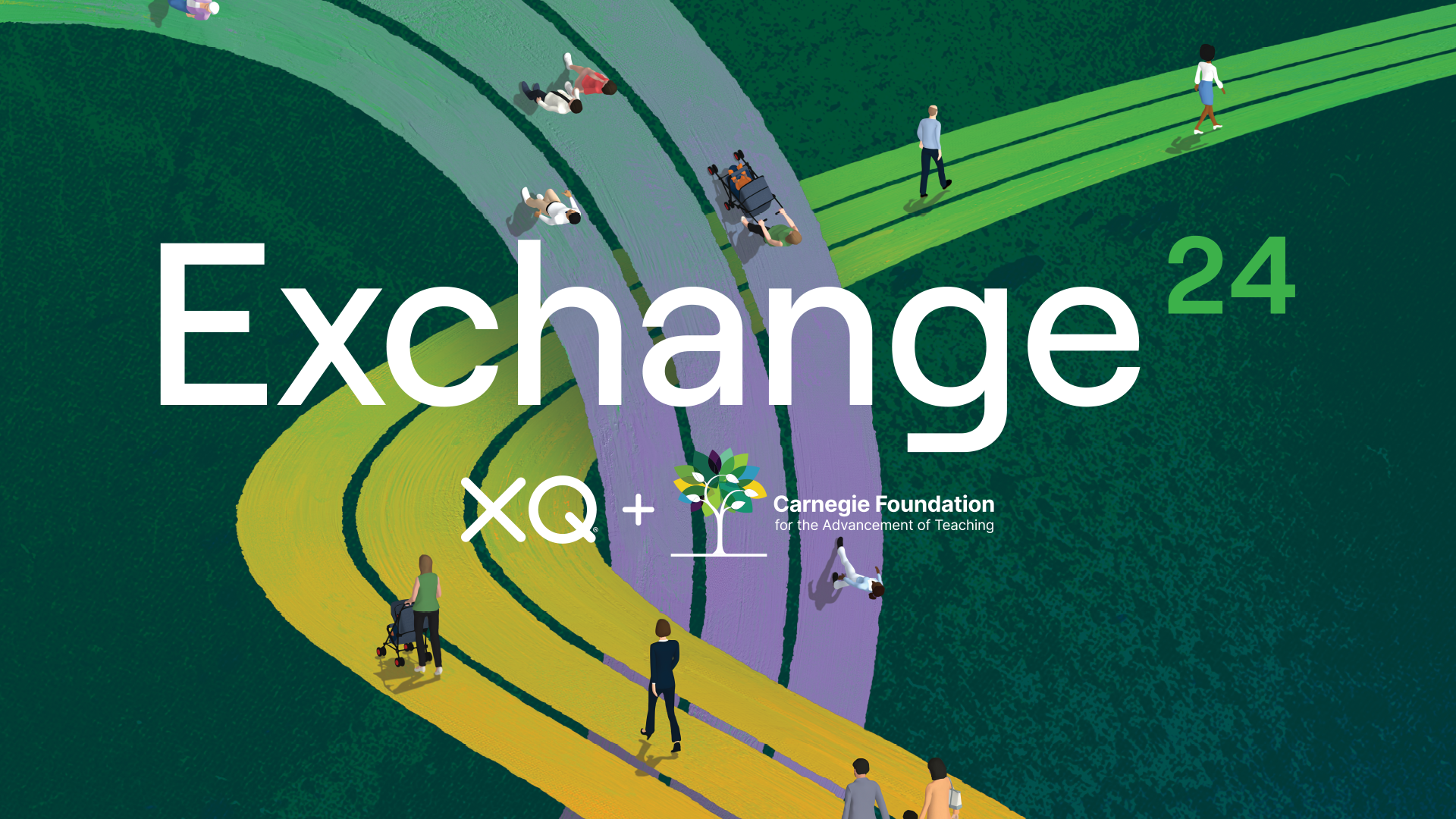How Rhode Island Is Using Remote Learning Insights to Rethink High School
Remote learning has change education forever, and we're already learning a lot from it. Here's what schools in Rhode Island are learning from the pandemic.

Rhode Island’s new XQ and Accelerator schools are rethinking high school to respond to a national moment. COVID-19 spurred unprecedented school closures and threw our education system into a logistical crisis. The immediate crisis of remote learning exacerbated existing inequities in the educational system, and the larger COVID-19 pandemic disproportionately affected poor communities of color, throwing many families into food and housing instability. This moment was only heightened by national protests against an ongoing disregard of Black lives in America. Needless to say, the status quo in America is in question and we need schools to respond to this moment effectively and inspiringly in order to bring change to America.
“This is the moment,” explained Nicole Campbell, XQ managing director of state and local strategy, at a virtual Rhode Island Development Day this past month. “If we can’t rethink high school now, then when?”
Development Days serve to ensure continuous transformation for school design by pushing breakthroughs and supporting schools. At this moment, that means discussing how to design high schools to respond to this national moment. A task XQ+RI is eager to accomplish. XQ is planning on hosting seven development days with XQ and Accelerator schools over the next school year to help schools implement and pilot various aspects of their school design to respond to the ever-changing educational environment.
Responding to a New Reliance on Remote Learning
Back in 2019, teams in Rhode Island began working to rethink high school and create schools that educate original thinkers for an uncertain world (an XQ Learner Goal). Their plans for individual high schools were selected in February. But, given all that’s changed in the world in recent months, these teams needed to rethink high school again and recalibrate their design plans to address the current cultural and political moment and ongoing public health crisis.
XQ+RI hosted Development Days to do just that. For two days in May and June, The Trinity Academy for Performing Arts (TAPA), Ponaganset High School, 360 High School, and Woonsocket High School reflected on the challenges and opportunities facing schools at this moment—answering questions like how to adjust their school design plans to better reflect and respond to this new world, and how to pivot in a way that makes their school models even stronger and more equitable.
One activity during these Development Days asked teams to reflect on how the design elements and principles of their school models respond to the current world climate. School design teams were encouraged to examine their cases for transformation in the context of remote learning, COVID-19, and social justice and to identify groundbreaking ideas that will create lifelong learners who will help solve our world’s most pressing problems.
Through brainstorming sessions and deep dives, school design teams came up with thoughtful strategies to ensure universal technology access, ways to create meaningful relationships with students that will help bridge the remote learning engagement gap, and plans to infuse core subjects with social justice curricula strategically.
Creating Meaningful, Engaged Remote Learning Experiences
The Development Days also sought to readdress how to create meaningful and engaged learning in a remote learning environment. Through thoughtful and inclusive discussion, we learned that XQ+RI schools—like many across the country—experienced problems translating their engaging learning approaches to a remote setting. But many of these schools found opportunities for growth in these challenges.
For instance, TAPA learned that even when tackling large logistical problems it’s necessary to use their team’s unique skills more accurately. For instance, a TAPA math teacher spent hours delivering computers all over Providence. Looking back, the school should have asked that educator to connect with their students virtually instead. “We monopolized the time of our strongest math educator. That was probably not the right call in retrospect,” says a team member.
Another design team reflected that virtual learning also unearthed where the weak spots were in terms of staff-student relationships. “Our teachers that didn’t put as much effort into building relationships with students struggled with virtual learning right out of the gate. This reinforced for us that we have to emphasize the core foundation [and XQ Design Principle] of caring, trusting relationships even more.” On the flip side, a student from the same school felt it was because of the strong relationships between adults and students that she felt supported and able to tackle virtual learning fairly well.
Students also talked about the value and promise they see in virtual learning. A Ponaganset student learned how to be a more “self-directed learner,” while another said, “online learning promotes personal growth and independence.”
On the other hand, some students struggled to stay engaged with virtual learning. One student felt distracted at home by the urge to play with her instruments or the need to help out with siblings, which took her attention away from core academic work. This frustration from juggling multiple responsibilities at once extends to students’ families as well. For example, a parent expressed frustration that she was not prepared to support her student academically because she didn’t understand the content. She also felt that other parents may not know how to access Google classrooms to track their child’s learning and wondered how this could be improved upon the fall.
All teams felt an urgency about improving the delivery and frequency of socially and racially conscious lessons, whether in-person or virtually. Teams brainstormed solutions to create culturally responsive curricula for the fall.
Supporting Students and Families Through Remote Learning
The journey to create groundbreaking learning experiences doesn’t begin and end in a day, but many have kernels that are sure to explode into something great. To help create discussions that foster these ideas, the Development Days included “breakout rooms” for people to probe problems in small groups.
One “breakout room” focused on better aligning parents in their children’s education. They talked about solving the problem by doing parent academies that take parents through the educational content before the child is assigned it. Through this strategy, parents are armed to be successful co-teachers and supporters.
A team member said, “Expecting parents to help at home with stuff they don’t know is hard. We need to build out intentional plans to support our parents to best support their students.”
The team also discussed ways to engage their students in remote learning should it continue into the fall. They aim to do this by leaning thoughtfully into student passions and highlighting the current issues in the real world in education.
For example, students can learn about mathematics by relating it to COVID-19 data or data on policing. A team math expert explained, “I want my math content to resonate with my students, interest them, and connect with issues that matter to them and our world. Do I want them to calculate percentages or know how to calculate inequities in healthcare or how Black men are disproportionately targeted by police? That kind of knowledge is the kind that can change the world.”
Of course, properly engaging students in remote learning also means learning how to use tools to engage with students better. The same educator also talked about how, with more time before the fall to prepare, she can reorganize her teaching to align with an online math platform to keep students better engaged virtually.
Preparing for an Uncertain World Through Remote Learning
Collectively—educators, students, and parents wondered and worried about whether or not changes and innovations made during remote learning will continue in a post-COVID world. Many people expressed fear that it will be easy to resort to old patterns and behaviors, once external pressure subsides.
“Unfortunately, people are really comfortable with the status quo,” said one principal. They expressed how the current moment was driving her to think much more deeply about the education system and American society at large. “I worry that many people are pushing to get back to the status quo instead of using this opportunity to be bolder.”
A participating superintendent echoed that sentiment. “Partly, we value the status quo in society and schools because that’s what’s known and comfortable. Change is hard. For example, when we originally wanted to go to a rotating schedule at our school, people were upset. Now, if we changed it back or to something else, they would be equally upset. With that said, if we pitched a model that was blatantly inequitable, people would say, ‘Oh my, no, we can’t have that!’ but they don’t realize that’s what we do have. We have to get uncomfortable in order to progress and move forward.”
These teams are familiar with discomfort. They spent more than 6 months digging into XQ Design Principles, creating Learner Goals, and confronting (often uncomfortable) truths about how they’ve fallen short of serving all students well, particularly students of color, English-language learners, and special needs students.
So, can our society and the education world harness this moment to bring much-needed change and innovation? The response has been a resounding “yes” from XQ+RI-supported schools. Change is a journey and they’re well on their way to rethinking educational boundaries, existing power structures, and status quo curriculum so that their students are original thinkers, generous collaborators, and lifelong learners.
What does an equity-driven high school look like to you? Share your vision on our forum. Check out the High School Design and Redesign topic page on the Rethink Together Forum and think about how we build better high schools.









